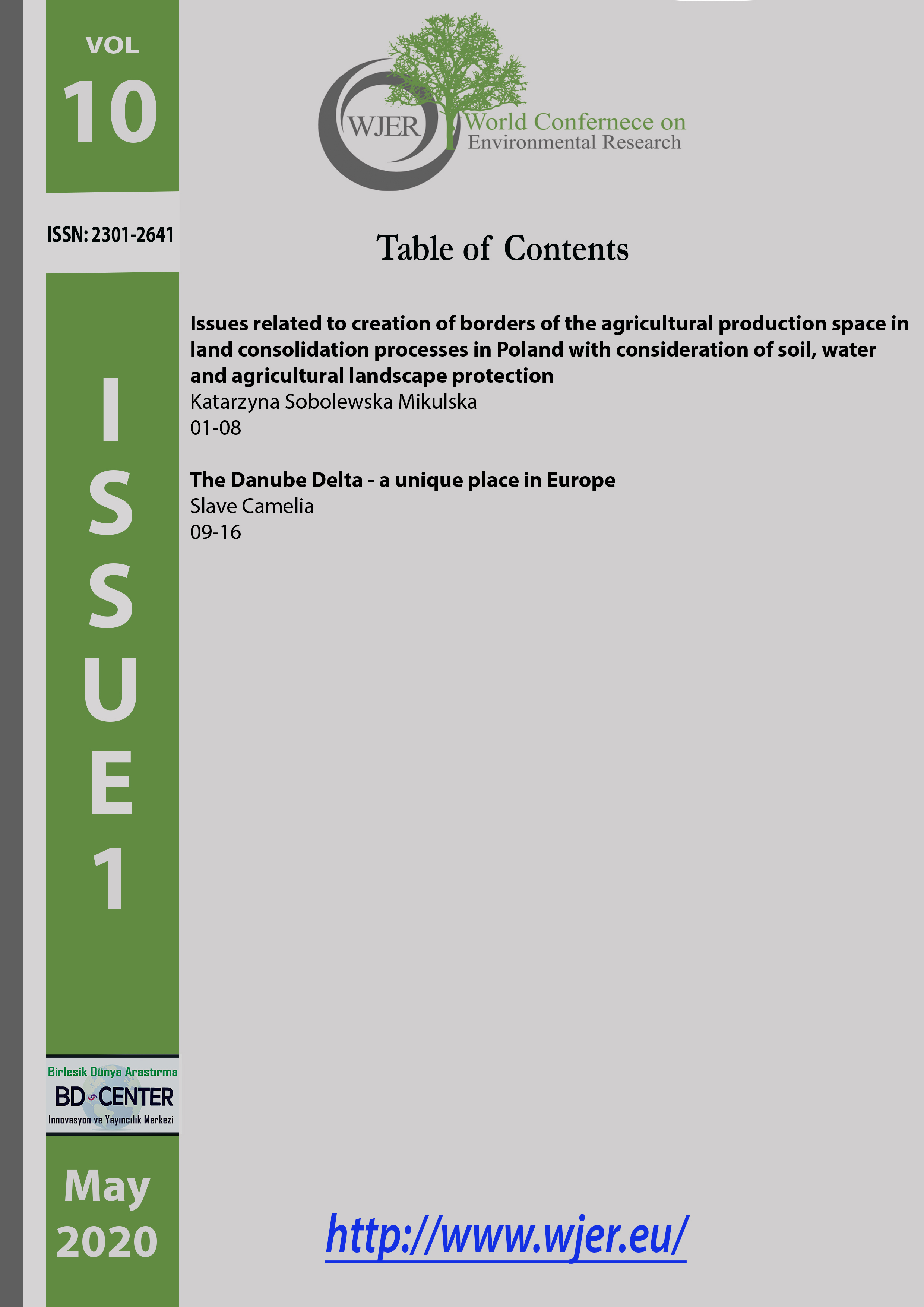Issues related to creation of borders of the agricultural production space in land consolidation processes in Poland with consideration of soil, water and agricultural landscape protection
Main Article Content
Abstract
The idea of rural areas development in the European Union has been implemented according to sustainable development rules. This approach is also valid in case of Polish rural areas, in particular when arrangement of borders of the agricultural production space is considered. Changes in density and sizes of farms in Poland exposed and intensified situation when agricultural production resources are not utilised, as well as degradation of the natural environment. From the perspective of the agricultural policy it has been estimated that in Poland the process of land concentration should be combined with the process of reduction of the number of farms. This process is performed in Polish conditions in the form of surveying works - in particular, as land consolidation operations. The necessity to follow the sustainable development rules proved that land consolidation works cover too narrow scope of conventional solutions. This process should not ignore ecological, environmental aspects, as well as other aspects related to spatial arrangement and landscape. The paper will discuss solutions of conventional land consolidation works performed in Poland, their scopes and estimation of demands. The land consolidation process is most important in transformation of the agricultural production space, where the basic objective is to improve the farm organisational space with consideration of environmental protection and landscape arrangements. The paper will also present and characterise the possibilities of solutions in the field of soil, water and agricultural landscape protection from the perspective of land consolidation works performed in Poland.
Keywords: land consolidation, agricultural production space, borders.
Downloads
Article Details

This work is licensed under a Creative Commons Attribution 4.0 International License.
World Journal of Environmental Research is an Open Access Journal. All articles can be downloaded free of charge. Articles published in the Journal are Open-Access articles distributed under Attribution 4.0 International (CC BY 4.0)
